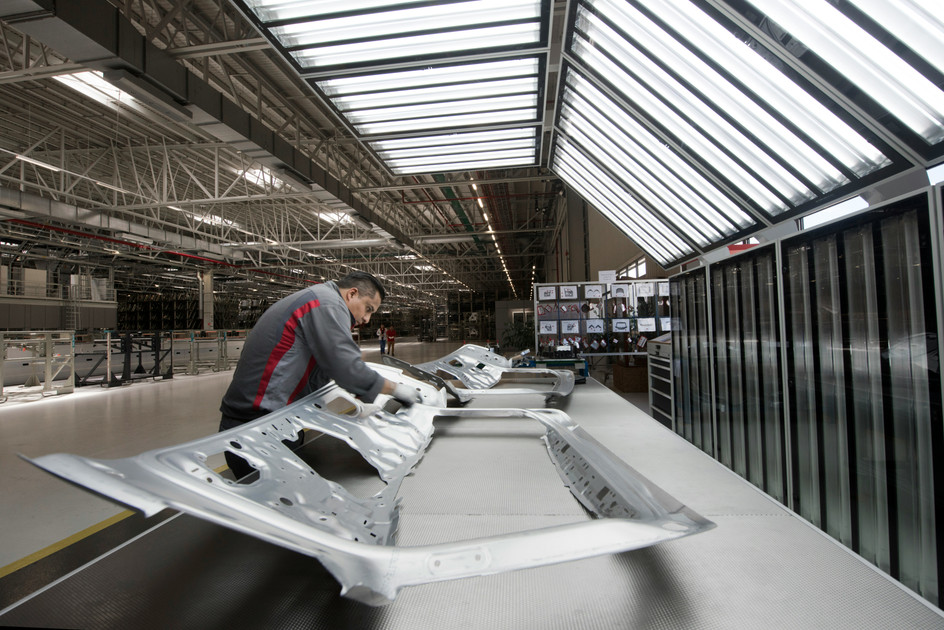151. Selecting the Right Color Temperature for Different Industrial Tasks
By Dani Thomason • Aug 11, 2025
In industrial environments, lighting is more than just a way to brighten a space, it directly impacts visibility, accuracy, and worker comfort. One of the most overlooked aspects of lighting design is color temperature, a critical factor that influences how people perceive light and perform their tasks.
Getting the right color temperature can mean the difference between a worker spotting a tiny defect during inspection or missing it altogether. It can help reduce eyestrain during long shifts, support the body’s natural rhythm, and even improve overall productivity. In other words, choosing the correct lighting color temperature isn’t just about brightness, it’s about creating an environment where people and processes thrive.
Understanding Color Temperature
Color temperature is measured in degrees Kelvin (K) on the Kelvin color temperature scale. It describes the light color emitted by a light source, ranging from the cozy glow of a warm white light at 2700K to the crisp, energizing effect of cool white light at 6500K.
Here’s how the spectrum breaks down:
- Warm light (2700K–3500K): Similar to an incandescent bulb, it produces a softer, amber tone often associated with residential lighting or hospitality spaces.
- Neutral white light (3500K–4500K): Balanced, versatile illumination that’s easy on the eyes, commonly used in offices and warehouses.
- Cool light (5000K–6500K): Bright, bluish-white, similar to natural daylight, ideal for detail-intensive tasks like assembly, inspection, and quality control.
The choice of light bulb color temperature directly affects how people perceive their surroundings. Warmer color temperatures create comfort and relaxation, while higher color temperatures increase alertness and visual accuracy.
Why Color Temperature Matters in Industrial Settings
Visibility and Accuracy
The higher the correlated color temperature, the sharper and clearer details appear. For tasks like precision assembly or visual inspection, cooler color temperatures (5000K–6500K) help workers detect even the smallest flaws. On the other hand, environments prone to glare—such as machine operation areas—benefit from a slightly lower color temperature to balance visibility and reduce strain.
Worker Comfort and Well-Being
Industrial employees often spend long hours under artificial lighting. Choosing the ideal color temperature can reduce headaches, eyestrain, and fatigue. For shift workers, using cool white light during nighttime hours supports alertness while maintaining alignment with the circadian rhythm. Gradual transitions toward warm lighting during rest areas or break times provide relief and promote relaxation.
Energy Efficiency and Productivity
Using the best color temperature doesn’t just support workers—it also reduces lighting fatigue and overcompensation. Employees don’t need to squint or over-focus under poorly matched light temperature, which means fewer mistakes and better energy efficiency across the facility.
Recommended Color Temperatures for Common Industrial Tasks
Assembly and Inspection Work
These tasks require sharp vision and attention to the finest details. A range of 5000K to 6500K color temperature, mimicking bright daylight, is best for maximizing clarity and precision. This white light ensures defects, labels, or color-coded components are easy to identify.
Machine Operation Areas
In machine-heavy zones, it’s essential to balance brightness with glare control. Neutral white light between 4000K–5000K provides clear visibility without overwhelming workers, reducing accident risks while maintaining accuracy.
Warehousing and Storage
For warehouses and logistics hubs, the priority is navigation and easy reading of labels. Neutral white light (around 4000K) is effective here, striking a balance between comfort and practicality.
Office and Administrative Areas within Facilities
Administrative spaces within industrial settings benefit from warm lighting around 3000K–4000K. This range promotes comfort during long desk hours, minimizes strain, and creates a welcoming environment for meetings and focused work.
How to Select the Right Fixtures
LED High Bays
For manufacturing floors and warehouses with tall ceilings, LED high bays are ideal. They deliver uniform illumination across large spaces and can be specified with the right color temperature for the job at hand.
LED Troffers and Panels
LED troffers and panel fixtures work best in offices, quality control labs, or training rooms. Tuned to neutral white light or warm white light, they create comfortable environments for extended desk work.
Tunable White LED Solutions
Flexibility is key in multipurpose facilities. Tunable white LED lighting allows operators to adjust light color temperature dynamically, shifting from cooler color temperatures for inspections to warmer light for relaxation or administrative tasks.
Implementing Color Temperature Changes in Existing Facilities
You don’t always need a full human-centric lighting redesign to improve your facility. Facilities can retrofit with LED tube lights or upgrade to integrated fixtures with adjustable LED color temperature. Pairing these with smart lighting fixtures and ceiling light controls makes it possible to automate shifts in light level and color tone throughout the day.
For example, a factory floor might start the morning with bright cool lighting to energize workers and shift to neutral white light later to maintain comfort during long operations. Break rooms and lounges can be set to warm white light to help staff relax.
OEO Lighting Solutions for Every Industrial Task
Selecting the right color for your facility’s needs requires more than just choosing a light bulb. It means evaluating every task, space, and worker requirement to create a complete lighting system that boosts performance while conserving energy.
At OEO, we specialize in LED lighting solutions tailored for industrial environments. From LED high bays that brighten vast manufacturing areas to linear high bay lighting for office spaces, our portfolio covers every application. Our tunable LED lights provide the flexibility to adapt to shifting demands, ensuring your workers always have the right color temperature for the job.
When it comes to industrial lighting design, one size doesn’t fit all. OEO partners with facility managers and business owners to design lighting environments that maximize visibility, support comfort, and improve productivity, all while staying energy efficient.
